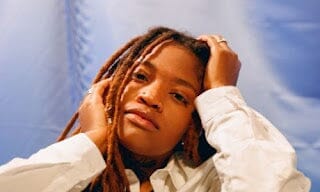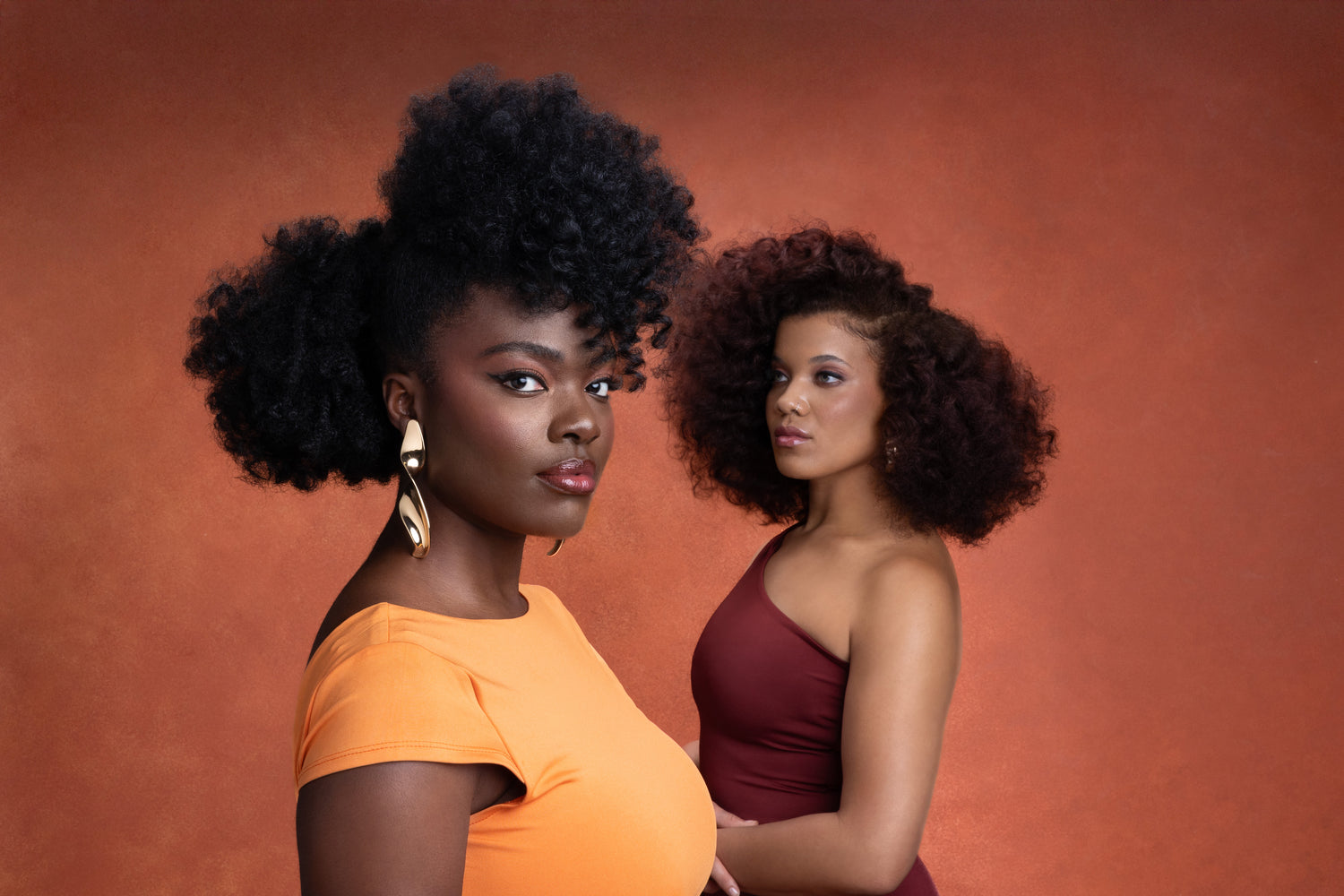Written by Jeanette Nkwate
Dandruff is a common non-contagious dermatological disorder that affects the scalp. White-yellow or grey, oily flakes and scales of medium to large sizes appear on the hair and scalp while your skin can get very itchy and even sore. You might find those flakes and scales in your bedsheets, too.
Dandruff has more technical and specific names depending on the cause of the skin condition. For instance, it can be considered a mild form of Seborrheic dermatitis, as they share many features such as the type of flakes and the increased oiliness and irritation, or it can be Pityriasis simplex capitis and be caused by fungal proliferation and/or colonisation. Nonetheless, they all share similar symptoms and treatments as many of the causes can co-exist and aggravate your scalp condition.
Wondering if you have dandruff? Our comprehensive guide covers everything – from symptoms, how to get rid of dandruff and how to tell if you just have a dry scalp. Use our table of contents (below) for easy navigation.
Dandruff Table of Contents:
Dandruff vs Dry Scalp: What's The Difference?
Dandruff Treatment: How to Get Rid of Dandruff
Can You Use Coconut Oil On Dandruff?

Is Dandruff Contagious?
Nope. Although dandruff can look embarrassing and frustrating, it is not contagious and you should not worry about getting it from or transmitting to others.
What Does Dandruff Look Like?
Dandruff is seen as a mild to severe skin condition and can be spotted by white/grey/yellow flakes located on the scalp and hair. You may also notice that the flakes are slightly greasy.
For severe conditions, please refer to our Severe Dandruff section.
Dandruff Symptoms
If you have dandruff, you will see these white or yellowish flakes on your scalp and hair. Your scalp can get easily irritated and inflamed causing redness and itchiness. Hair thinning and hair loss can also be experienced from excessive scratching, which can damaged the skin and hair follicles. Typically, the damage is temporary
Dandruff vs Dry Scalp
You may confuse dandruff with dry scalp as they both have similar symptoms like flaking and itchiness.
However, a dry scalp is a condition where the scalp skin is dry/not moisturised enough (for multiple reasons), and is characterised by white, tiny, dry flakes.

While dandruff is a scalp condition that presents large, white/yellowish and usually greasy flakes. The scalp and hair tend to feel oily and itchiness may still be present even when the scalp does not feel necessarily dry.
Dandruff requires special active treatments and moisturising for best, long-term effects, whereas a dry scalp can be treated with adequate shampooing and subsequent moisturising.

Image: A) Normal skin, B) Dandruff skin, C) Seborrheic dermatitis (Source, p. 231)
Dandruff Causes
You may be wondering what causes dandruff? There are many factors for developing it, and more often than not they can coexist and/or amplify the symptoms.
It is difficult to understand which existed before the other – much like the egg and the chicken analogy – so an expert’s opinion is highly recommended. The three main factors are: microbiome imbalance. individual predisposition and skin barrier dysfunction.
Now, for the science. We all have a range of microorganisms living on our skin that work together to maintain the skin barrier function to protect us. However, a disruption in this balance between the microbiota mixed with individual susceptibility can have dramatic effects on the skin and cause dandruff.
The Malassezia species is considered to be the most dominant fungal species, while Propionibacterium acnes and Staphylococcus epidermidis are the major bacterial colonisers on the scalp associated with dandruff. The Malassezia spp. growth depends on lipids like triglycerides, sterols and phospholipids.
As the species cannot produce fatty acids on its own to produce lipids, it takes advantage of the lipids that the person already has. The Malassezia app finds all these juicy lipids in the sebum, our natural oil.
As it breaks down the sebum triglycerides, it uses the saturated fatty acids for its growth while the unsaturated fatty acids, especially oleic acid, damage the skin barrier function.
As a consequence, the microorganism amount keeps increasing and accumulating in oil-rich areas while the cell membranes and extracellular networks of your skin are disrupted.
At the same time, the ratio between P. acnes and S. epidermidis is decreases in dandruff-affected scalp. Staphylococcus spp. has been observed to increase the scalp’s transepidermal water loss, itchiness, and cause a decrease in the overall hydration.
The presence and the numbers of this species is very similar between healthy and dandruff-affected scalps, leading researchers to conclude that the Malassezia spp. is another contributor to the scalp condition rather than a sole cause.

Research shows how a severe/chronic barrier disruption impairs the protective feature of your skin and validates the factor of personal susceptibility. Your skin can get damaged by over-shampooing, combing, tight hairstyles, relaxing, excessive sun exposure, temperature and low humidity. All of these can play havoc with your skin. What a 'disrupted barrier' means is that there are depleted, disorganised structural lipids (e.g. ceramides, cholesterol) and skin cells which create 'gaps' in the skin where from water can escape, leading to dehydration.
Your skin will try to fight itself and try to restore a healthy scalp, but the result is surprising. Your scalp creates more lipids to restore its structure. Those lipids help manage the water content in your skin (which also gives more food for Malassezia spp.) and are used in the creation of more skin cells (hyperkeratosis) to fill up the gaps at a faster pace (hyperproliferation). Hence, your scalp has to work more and faster, leaving the job half-finished. It creates both 'mature' corneocytes with irregular structures and 'immature', parakeratotic cells. Instead of shedding individually, these cells shed as a group.
NB: It’s worth remembering that you don’t see such dramatic effects with a simple case of dry skin, so bear this in mind if you are concerned about your scalp condition.
Dandruff and Hair Loss
Dandruff does not directly affect hair loss. Pink or red underlying skin where the scales were, caused by either the severity of the condition or by excessive scratching, indicates you are possibly reaching the blood supply of the hair follicles, increasing the possibilities of permanently damaging them. Simultaneously, the damaged skin leads to less protected scalp.
Dandruff Treatment: How to Get Rid of Dandruff
The traditional and most widely used treatments are active-containing shampoos. Specifically, a dandruff treatment can be antifungal agents such as Zinc pyrithione, Selenium sulphide with the possible conjunction with keratolytic agents like Salicylic acid and Sulfur and/or anti-itch agents like Coal tar. Again, we would suggest you check with a trusted trichologist for the most suitable treatment.

In addition, you could use a mild cleansing shampoo (we suggest Swish) as it will cleanse your scalp effectively but at the same time help improve the barrier function, as it won’t damage your skin too much like 'harsher' ingredients.

You could also use a natural-origin scalp oil (we suggest Soothe and Nourish as it would create an occlusive barrier on top of your skin and help trap all the natural moisturising factors and water within your skin. They also contain essential oils that are known for helping with inflammatory scalp issues and irritations.
Coconut Oil For Dandruff
Please don't be fooled by resources on the internet. Coconut oil cannot treat the underlying causes of dandruff, but it can be used as an overnight treatment to soften the scales to make their removal easier. When removing them be careful not to scratch or use too much pressure as it can have the opposite effects. Following a treatment suggested by a specialist will complete and be effective to the cause of the treatment.
Severe Dandruff
Extreme dandruff, such as Seborrheic dermatitis, can be detected in other areas, such as around the nose, temples, nape, ears, eyebrows and neck, where the scales are in the form of plaques and may have a crusty/sticky/waxy texture accompanied by a slight odour. The underlying skin where the plaques were could be pink/red. The itchiness is much more severe, increasing the possibility of skin damage. In other cases, lesions and papules may indicate other skin conditions.
Dandruff, both in its mild and severe form, should be diagnosed and treatment suggestions should be given by a specialist. You should refrain from using homemade remedies as they will most likely worsen the symptoms. The effective and long-term treatment is composed of specific ingredients that target the causes.
More Articles:
Do I Really Need to Use a Scalp Oil?

